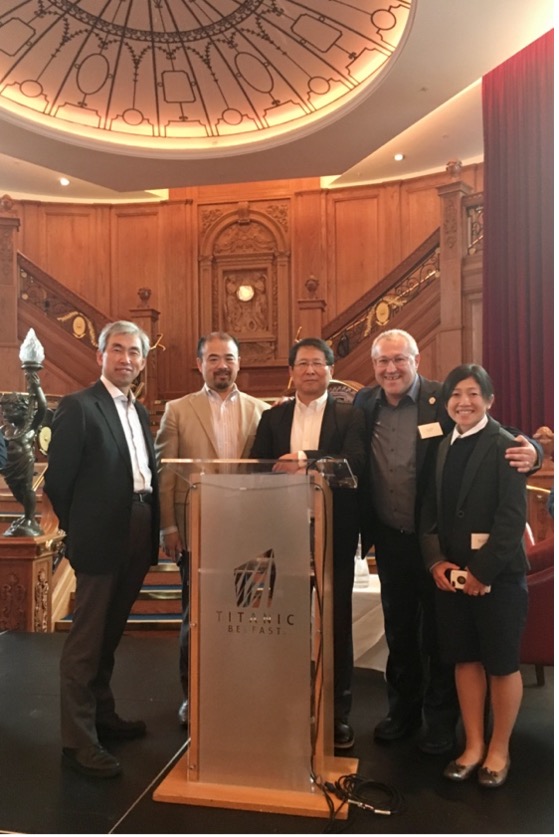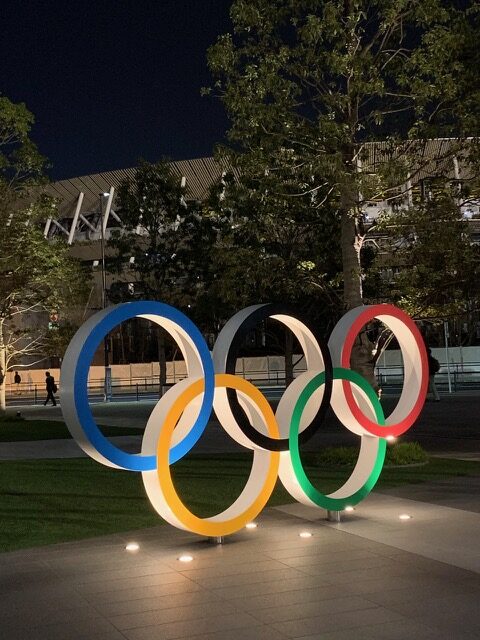A transcript of a chat between Mario Bizzini (PT & BJSM Deputy Editor), and Prof Masaki Katayose and Mina Samukawa, who were both instrumental to the medical set-up at #Tokyo2020.
Prof. Masaki Katayose san: can you please introduce yourself, and also describe your function during the Tokyo Olympic Games
(Masaki) I graduated Sapporo Medical University, followed by a Master’s degree from the University of Alberta, Canada, under the supervision of Professor David Magee, and a PhD from the Department of Orthopaedic Surgery, Sapporo Medical University School of Medicine, Japan. I have consistently pursued clinical, educational, and research interests in sports physiotherapy and am currently the professor of sports physiotherapy at Sapporo Medical University, my alma mater, since 2007.

In April 2016, before the Rio de Janeiro Olympic game, I was nominated and appointed as the chief physiotherapist of TOCOG. From 2016 to 2020, I worked part-time, one to three days a week, and from June 2021, full-time. I understand that this is due to my various activities as chief physiotherapist for the Japanese Olympic Team, member of the JOC Medical Committee, and various associations related to sports medicine.
As chief physiotherapist, my duties are to prepare for the operation of the physiotherapy & physical therapy service as defined by the IOC in the polyclinic and 33 venues, and to ensure smooth operation during the Games. As a counterpart of Marie-Elaine Grant, the IOC’s PT representative, my other major task was to ensure coordination between the IOC and TOCOG in the preparations.
And although I was the chief physio, I also had to be the deputy operation manager for the whole polyclinic as well as for the competition. This work was intense. However, it was a great experience for me to be able to manage the entire clinic. I believe that I was able to make people in Japan aware of the fact that physiotherapist is at the forefront of sports medicine and can contribute to the management of sports medicine.
Mina Samukawa san: can you please introduce yourself, and also describe your function during the Tokyo Olympic Games
(Mina) I am an associate prof. of Faculty of Health Sciences, Hokkaido University. I graduated from graduate school of Sapporo Medical University. During my graduate school, my professor was also Dr. David Magee and I went to University of Alberta as an exchange student and also worked as a physio assistant at Whistler Physiotherapy clinic in BC, Canada. Then I came back to Japan and started to work for Hokkaido University. At the same time, I became a physio of freestyle ski national team.
Currently I am a vice president of Japanese Society of Sports Physical Therapy. I am also a medical support group member of Japan Olympic Committee and a member of medical & science committee of Skiing Association of Japan.
I went to Torino (2006) and Vancouver (2010) with Freestyle ski national team. Then I went to Sochi (2014), Rio (2016), and PyeongChang (2018) working for team Japan. Thus, Tokyo 2020 was my 6th journey for the Olympic games.
As for the Tokyo 2020, I worked as a senior core staff of the Physiotherapy room at the Polyclinic. My role was for running physiotherapy room smoothly especially taking care of medical recording system and talking to clients about their needs and treatment options.
The Tokyo Olympic Games were first planned for 2020, then they finally took place this summer 2021: did this postponement influence your preparation and other related aspects towards the Games?
(Masaki) I am aware that it has had a very large impact. One of the biggest influences was staff recruitment. In our country, physical therapists mostly work in medical institutions, which made recruiting difficult. In order to maintain the covid-19 treatment system, all staff of the medical institutions were mobilized, and from the viewpoint of infection prevention, restrictions on out-of-hospital activities were unavoidable. Therefore, it was essential to secure a consensus on infection prevention measures, taking into account the infection situation in Japan and domestic practices. No one had ever experienced this situation before, and the preparatory work was a daily challenge, and we experienced the difficulty of securing consensus among various people in various positions.
(Mina) I taught the courses for PT staff education provided by JPTA. Last year the courses were canceled due to pandemic of covid-19 and changed to on-line materials. Of course, interactive work- shops were better than on-line, but we found out that quite a few PTs were watching it and practiced depending on their needs with these materials. With those perspectives, we got more time for preparation.
Could you describe the physiotherapy (or physical therapy) landscape in Japan? (is physiotherapy still considered a “young” profession, beside the historical “strong” groups of Athletic Trainers and Judo therapists? what about the sports PT group (a Member Organization of IFSPT?)
(Mina) As you may know, we are not allowed to have our own practice and physicians prescribes “physiotherapy.” No direct access. Thus, most physiotherapists work for clinics and hospitals. Athletic trainers work for teams, gyms, and schools etc. Judo therapist can have their own practices but are allowed to treat only orthopedic patients.
As for Tokyo 2020, physiotherapy services include physiotherapy (physiotherapists), sports massage (massage therapists), and acupuncture (acupuncture therapists).
(Masaki) Both judo therapists and ATs were involved in the competition, but Tokyo 2020 has positioned the holders of these licenses other than PTs, masseurs, and acupuncturists as athlete care assistants (ACA) to support the medical staff. In particular, AT license holders are encouraged to work as ACA, mainly at fitness centers. I believe that

we have been able to develop support for the athletes from various standpoints.
Could you summarize your preparation towards the Tokyo Olympic Games? (as an example: what type of courses did you organize? how were finally the PTs or sports PTs selected? did you had to change much due to the Covid-19 restrictions?)
(Masaki) We have secured three tracks for staff recruitment. The first is to recruit core members to assist the Chief Physio in managing the service, which I have decided based on their experience in international competitions, clinical skills, and language ability. I have asked Mina Samukawa- san, Tatusya Tamaki, and Miwako Toyama, et al to be the senior core staff member for this recruitment.
For the second recruitment, the Japanese Physical Therapy Association recommended the candidates and the Organizing Committee confirmed the hiring after conducting online interviews for all the recommended candidates. This process secures staffs to work at the polyclinics and Paralympic venues. The criteria for recommendation from the association is that the candidate must have at least five years of clinical experience in sports physiotherapy after obtaining a license at the time of the Games and have basic level English proficiency.
The third recruitment was for staff working at the competition venues of Olympic, and this was finalized after receivin
g recommendations from various domestic competition organizations. The importance of understanding the competition environment in which they operate on a daily basis was emphasized in this recruitment.
For the recruited staff, the organizing committee conducted an online training and a full day of training on specific operations at the competition site and polyclinic. A training course organized by the Japan Physical Therapists Association is also being conducted.
Mina san will explain the contents of the JPTA training course to you.
(Mina) The courses were started 4 years ago. At first, basic courses about “sports physical therapy” including first aid, taping, English, and some case studies. After the staff recruitment and selection process were completed, we provided the training courses of acute injury care, taping, English communication skill, and team building through intensive lab courses and discussion using case scenarios of not only polyclinic but also field of play with other PTs staffs. As I mentioned it before, the course was changed to on-line after the covid-19 pandemic was occurred. Even the courses were changed to on-line, we made discussion time with other attendants so that we shared the feeling and preparation for Tokyo 2020. Most PTs work for clinics and hospitals so they struggled if they work for the Olympics or not because of their situations. Sharing our feeling was important at that time. We also made another on-line material for self-preparation early this year and it will also be used for legacy education after the Olympics.
How many PTs were involved in Tokyo and how were they distributed between the Polyclinics and venues?
(Masaki) In total, 1,000 PT volunteers will participate in the Olympics and Paralympics. There will be about 150 volunteers at the polyclinics and 850 at the venues. The polyclinics are staffed by core members, many of whom work for long periods of time, up to 20 days. This is beneficial for service delivery management.
Tune in next week for Part Two!
ありがとうございます _ Arigatou gozaimasu